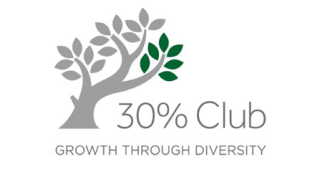In Singapore, the literacy rate among women aged 15 years and above is nearly 95 per cent and the female labour force participation rate has more than doubled from 25 per cent in 1965 to close to 60 per cent in 2014, according to Ms Sim, Minister of State for Communications and Information and Education.
However, women still have a long way to go in Singapore in achieving equality.
For instance, despite the high female literacy rate and labour participation rate, the 2015 Hays Asia Salary Guide found Singapore falling behind mainland China, Malaysia and Hong Kong.
Barely a quarter – 27 per cent – of management roles are held by women here, below the Asian average of 29 per cent.
Singapore has plenty of room to catch up with China, the region’s diversity leader with 36 per cent of leadership roles in the mainland held by women.
Mr Adam Garrard, chief executive of Willis Asia, a leading global insurance broker, said women’s career growth and development continue to be stifled in the workplace here despite research showing it is in the financial best interests of firms to promote gender equality.
He cited research by consultancy McKinsey showing that companies in the top 25 per cent in terms of female representation on executive committees performed better than the rest. Furthermore, the financial performance metrics indicated that the return on equity was 47 per cent higher and pre-tax earnings were 55 per cent better than the median.
Defusing the myths

Image credit: http://www.idiva.com
Traditionally, women have faced more challenges than men as they have child-bearing and rearing responsibilities that can set them back a few years in the corporate climb. And there are lingering perceptions of women being more emotional and mellow, rendering them less effective leaders.
However, in modern times, supporting social infrastructure has sprouted up to replace some of the conventional roles of women. The prevalence of domestic helpers has freed females from the typical duties of a homemaker and enabled women to focus on adding value to the organisation.
This role perpetuates inequity for women. Overcoming these obstacles to societal fairness is a means to achieving proper equality of the genders.
In other words, women should be given more – if not equal – opportunities for career progression to compensate for their “natural handicap”. This promotes equity between men and women, laying the bricks for a more equal society, where both genders can compete fairly and freely.
Many people may associate women with certain feminine traits such as empathy, sensitivity, and gentleness. These stereotypes may effectively dim the women’s prospects for development and promotion at some organisations.
Worse, such outdated views can be counter-productive and inimical to the organisation’s success as they fail to recognise the inordinate value that a diverse range of behavioural traits may offer – such as varied and insightful perspectives.
The significance of gender diversity is no different from racial diversity or religious diversity.
Having a good mix of people is imperative to understanding the real needs and wants of a globalised world through the formation of a microcosm. Businesses become better informed of the cultural and economic realities and make wiser decisions.
At home

Image credit: http://www.dreamstime.com/
Women here are locked in a constant struggle to juggle work and family. Alleviating this situation would encompass managing the expectations of spouses, children, and parents-in-law.
Family members have to lend their collective support to the advancement of a women’s career.
However, this does not mean women should ignore family ties. Being career-driven is a respectable virtue, but women should still find time for quality interaction with their families.
Take the cases of Ms Stella Tan, chief executive of Tenet Sompo Insurance, and Ms Jacquelyn Goh, chief executive of another foreign insurer, RSA, in Singapore.
Ms Tan said the 30-minute car journey to school is vital to fostering closeness between her and her two children through informal conversations. Both women also acknowledged that their husbands are also very supportive of their key positions in their organisations.
In the organisation

Image credit: http://www.itp.net
Bosses also play a huge role in balancing the gender mix at all levels of their organisations.
From entry level up to the boardroom, bosses can provide more mentoring and networking opportunities to speed up the learning curve, develop critical soft skills, and build contacts for future collaboration and support.
A good example is the “Women at Willis” initiative at insurer Willis Asia, which seeks out and advances talent without restriction. Willis gathers the brightest women across the world every two years at its London headquarters to promote insightful dialogue and stronger links through a series of seminars and workshops.
From the Government

Image credit: http://www.china.org.cn
Implementing gender mix legislation may be one of the best ways to kick-start the move towards greater gender diversity.
Singapore can probably learn from the success story of our neighbour, Malaysia, whose government has achieved the target of making women 30 per cent of the employees at decision-making level in the public sector.
Now, this goal is being extended to the private sector and is expected to be reached by 2016.
Such targets may be controversial. However, they push employers to groom talent, both female and male. This enables the exploitation of their full potential and their different but complementary capabilities and experiences that are required to sustain business growth in a dynamic and fast-changing world.
Independent bodies
For all the efforts applied at the individual, corporate and government levels, it is essential to track the progress made to enhancing workplace gender diversity.
Many reports measure the representation of women on company boards, but more should be done to track and measure the number of women taking on senior executive or other management roles.
This would result in a better information flow of any improvements made to the socio-economic status of women and strengthen accountability at every level.
One way is to establish the 30 per cent club here. It already has a presence in the United States and Hong Kong.
The club is steered by a group of business leaders committed to achieving gender balance at all levels through running specific initiatives such as cross-company mentoring schemes aimed at mid-career women with high potential of succeeding to the senior level.
No easy feat
Promoting gender diversity needs universal support from men and women, in the same way as campaigns to promote racial diversity did.
Reckoning the benefits of gender diversity is the first step to changing the outmoded mindset that influences actions and behaviour. It is never too late to recognise and polish the hidden gems hoarded in women.



